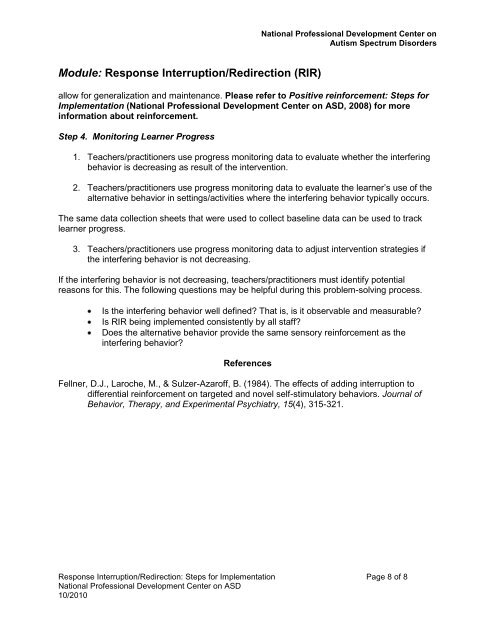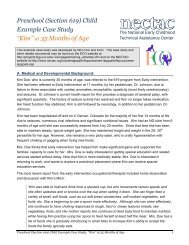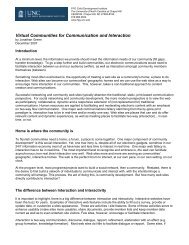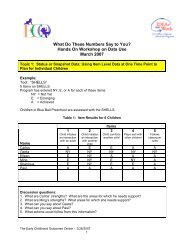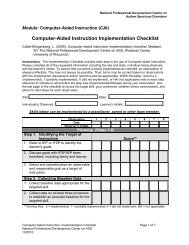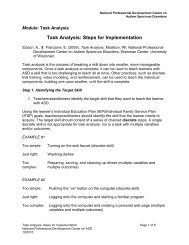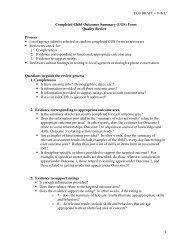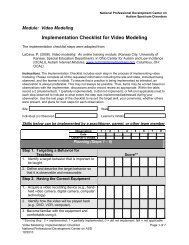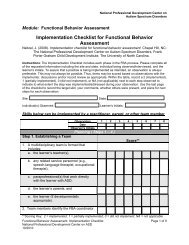Steps for Implementation: Response Interruption/Redirection
Steps for Implementation: Response Interruption/Redirection
Steps for Implementation: Response Interruption/Redirection
- No tags were found...
Create successful ePaper yourself
Turn your PDF publications into a flip-book with our unique Google optimized e-Paper software.
National Professional Development Center onAutism Spectrum DisordersModule: <strong>Response</strong> <strong>Interruption</strong>/<strong>Redirection</strong> (RIR)allow <strong>for</strong> generalization and maintenance. Please refer to Positive rein<strong>for</strong>cement: <strong>Steps</strong> <strong>for</strong><strong>Implementation</strong> (National Professional Development Center on ASD, 2008) <strong>for</strong> morein<strong>for</strong>mation about rein<strong>for</strong>cement.Step 4. Monitoring Learner Progress1. Teachers/practitioners use progress monitoring data to evaluate whether the interferingbehavior is decreasing as result of the intervention.2. Teachers/practitioners use progress monitoring data to evaluate the learner’s use of thealternative behavior in settings/activities where the interfering behavior typically occurs.The same data collection sheets that were used to collect baseline data can be used to tracklearner progress.3. Teachers/practitioners use progress monitoring data to adjust intervention strategies ifthe interfering behavior is not decreasing.If the interfering behavior is not decreasing, teachers/practitioners must identify potentialreasons <strong>for</strong> this. The following questions may be helpful during this problem-solving process.Is the interfering behavior well defined? That is, is it observable and measurable?Is RIR being implemented consistently by all staff?Does the alternative behavior provide the same sensory rein<strong>for</strong>cement as theinterfering behavior?ReferencesFellner, D.J., Laroche, M., & Sulzer-Azaroff, B. (1984). The effects of adding interruption todifferential rein<strong>for</strong>cement on targeted and novel self-stimulatory behaviors. Journal ofBehavior, Therapy, and Experimental Psychiatry, 15(4), 315-321.<strong>Response</strong> <strong>Interruption</strong>/<strong>Redirection</strong>: <strong>Steps</strong> <strong>for</strong> <strong>Implementation</strong> Page 8 of 8National Professional Development Center on ASD10/2010


